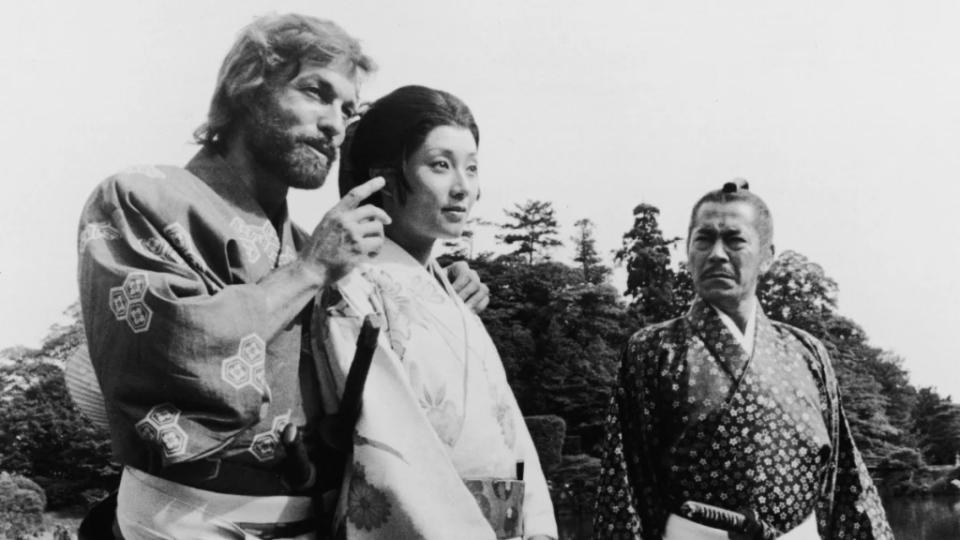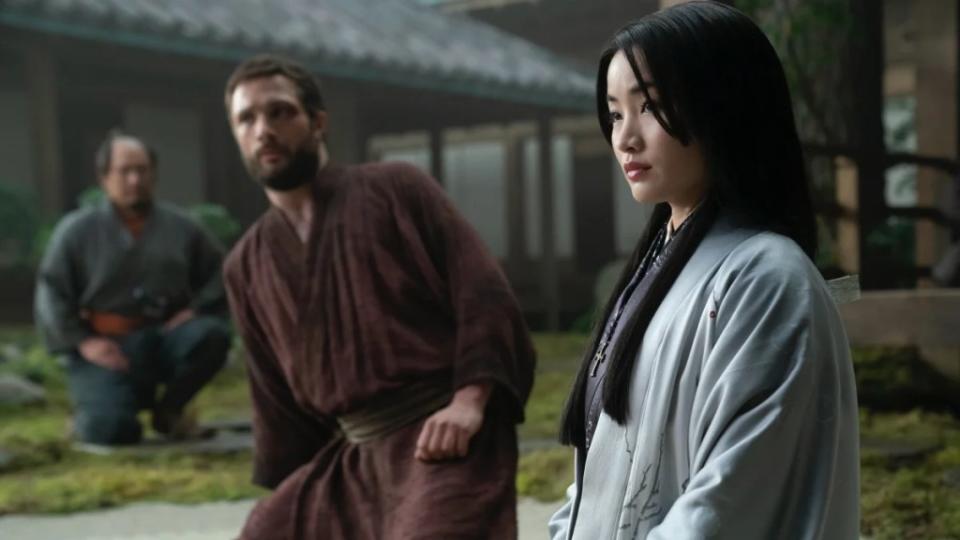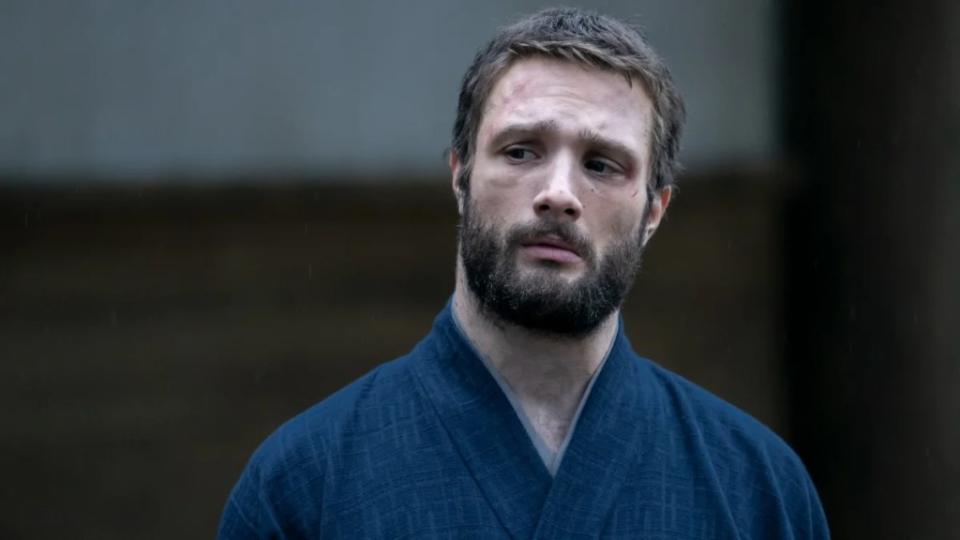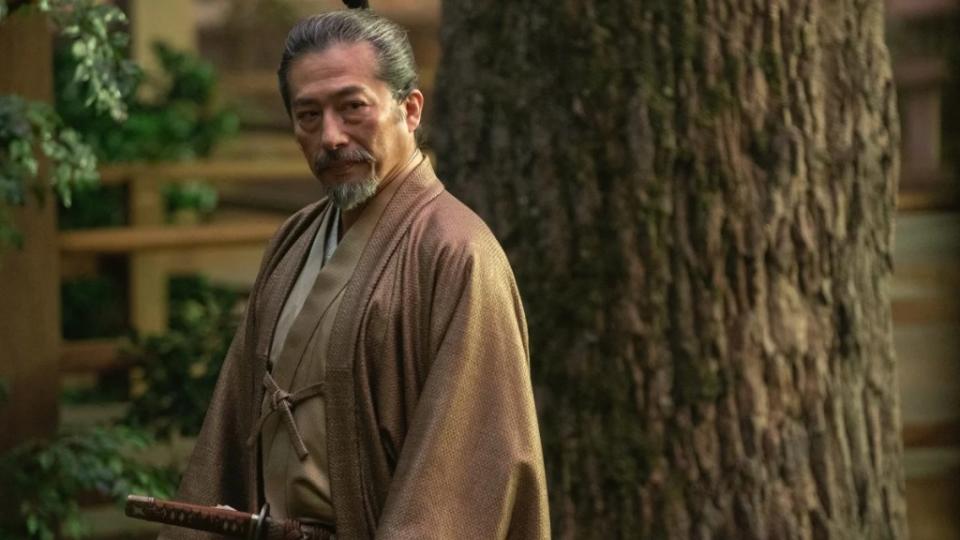How FX’s ‘Shogun’ Revolutionized ‘East-Meets-West’ Collaborations: ‘This Is Our History’
- Oops!Something went wrong.Please try again later.
- Oops!Something went wrong.Please try again later.
When “Shōgun” first premiered on NBC in 1980, the miniseries marked a seminal collaboration between American and Japanese filmmaking. Though the $25 million production delivered ratings and awards wins stateside, for those from Japan, the show was criticized for its brutality yet praised for building a cultural bridge between the two countries. “Shōgun” was a series that revolutionized television, both due to its scale and its international focus.
Forty-four years later, that is once again the case with FX’s latest miniseries.
By creating a truly collaborative on-set environment, constructing a whole new method for subtitling and handing creative control over to one storied megastar and martial artist, FX’s “Shōgun” — which chronicles a power struggle in 16th century Japan — was able to create what Hiroyuki Sanada described as “a dream East-meets-West project and team.”
“As a Japanese person, I can proudly say we did it,” Anna Sawai, who stars as Lady Toda Mariko, told TheWrap of the historical epic. ”It’s probably the first [project] that I can just say, ‘This is our history,’ which is so important. Before I used to kind of have to make excuses to my Japanese friends, like, ‘Well, they didn’t get this right, but it is a great story.’ With ‘Shōgun,’ I don’t have to make any excuses.”
As television becomes more international with global series like “Squid Game” and “Berlin” dominating most-watched lists stateside, here’s how “Shōgun” pulled off a truly multicultural collaboration a decade in the making.

The shadow of NBC’s 1980 miniseries
When “Shōgun” first premiered on network television in 1980, it was a huge deal. The five-night miniseries cost NBC $12 million and was supposed to do for the network what “Roots” did for ABC in 1977: shower it in ratings, awards and critical praise.
Though it was certainly widely watched, the miniseries wasn’t quite the runaway hit NBC anticipated.
The original “Shōgun” won the week for NBC with more than a quarter of households that had televisions tuning in to watch the epic. It also had its fair share of awards accolades, winning the Emmy for Outstanding Limited Series, the Golden Globe for Best Television Series — Drama and a Peabody.
Still, the show’s success wasn’t quite as overreaching as NBC dreamed. A quarter of households was impressive, but at one point it was estimated that 61% of all Americans with a TV were watching “Roots.” The series also received criticism from Japanese audiences.
“Sure, we may regard the scenes of bloodshed and brutality as a bit exaggerated, but ‘Shōgun’ can be the start of a learning process for millions of Americans,” one official of Japan’s Foreign Ministry told the New York Times after the series premiered in Japan.
Based on the bestselling 1975 novel by James Cavell, the story follows John Blackthorne, a pilot who becomes the first Englishman to reach Japan. Almost as soon as he reaches land, Blackthorne finds himself swept up in a religious and political saga that involves several feudal lords on the verge of war over the future of their country. Accompanied by Lord Yoshi Toranaga and the translator Lady Toda Mariko, the brash Blackthorne is forced to realize that he plays a very small part in this sweeping epic.
“I watched it at that time, I was twenty-something. It was big news to Japan as well,” Sanada said.
As soon as Sanada was approached about a new adaptation of the project, the legendary actor known for his portrayals of samurais and conflicted warriors watched the miniseries again and reread the novel. He then asked himself a difficult question: Why remake this story now?
The answer for Sanada lay in the character of Lord Yoshi Toranaga. In the novel, the feudal lord’s brilliance and negotiations lead to a 260-year peaceful period for his country. “That’s why he became a hero,” Sanada said. “I thought that was the biggest motivation to take this role … that story became more timely and serious. I’m feeling some kind of fate [since] I am involved in this now.”
For their part, executive producers Rachel Kondo and Justin Marks, who adapted the miniseries for FX, were less interested in the legacy of the NBC series and more invested in doing justice to Cavell’s “timeless” original novel.
“We were just so taken by the book in ways that I feel like were untapped,” Marks, who created and ran the Starz series “Counterpart” and co-wrote “Top Gun: Maverick,” told TheWrap. “The legacy of the book, in terms of movies and television shows, over the last 40-odd years gave us concerns, not necessarily just on the level of representation or appropriation — although all of these things are important, but I can’t speak to them. For me, it was more from a place of what was new in 1975 is not new today.”
Marks emphasized that their adaptation is an ensemble piece instead of focusing on Blackthorne’s story, which is truer to the original novel. It also dives more into the intersectional themes of the original work, exploring what it means “to encounter another culture and oneself in another culture and to surrender, in some ways, our idea of self.”

A new way to blend cultures
“It took us a decade to try to get it right,” John Landgraf, chairman and president of FX Networks, told TheWrap of the long road to getting “Shōgun” to air. “We could have never made ‘Shōgun’ if we hadn’t been bought by Disney and we weren’t making a show for a streaming audience. We would have never been able to build that level of production. So it’s exciting when television gets more ambitious.”
The full scope of that ambition truly started with Sanada. Seven years ago, the actor agreed to play Toranaga on one condition: that the production hire a Japanese crew experienced in making samurai dramas. Once Kondo and Marks took over the project in 2020, Sanada was also made a producer. Under this new title, he was able to help craft “Shōgun” into his “dream” project.
Sanada had experience consulting on Hollywood projects before, namely 2003’s Tom Cruise-fronted “The Last Samurai.” But whenever a director would ask him about Japanese culture, Sanada said he “felt the limit to say something as an actor.”
As a producer on “Shōgun,” Sanada was finally able to put all of his experience in Hollywood to use as well as his “longtime experience in Japan.” The first problem he and the “Shōgun” team faced? The script.
“Hiro was very adamant early in the process,” Marks said. “When he saw the first translation into Japanese, he said, ‘I think that we need to find another voice.’”
That problem rested with language and cultural barriers. No matter how excellent the translators were, precisely adapting an English script into Japanese led to clunky dialogue for the actors. Because of this, the English subtitles did not always match what was happening onscreen. Pauses or expressions that may have made sense to a Japanese actor performing this translated script could feel awkward to the English-speaking audience.
In this first version, there was also a disconnect in how characters expressed themselves that felt disingenuous to Japanese culture and the time period. Sawai pointed to the phrase “I love you” as an example of that difference.
“English people will easily say ‘I love you,’ ” Sawai said. “But back in the day, that wasn’t really a thing.”
Faced with a producer who was telling them that their script wasn’t working, Marks and Kondo saw two options.
“One is to resist and to say, ‘No, this was our intention. Most people in the United States are going to watch it and not know what is being said,’” Marks said. “But then what happened was, when we began to listen to the lines as they were being retranslated, the performances opened up in front of our eyes. You realize, ‘Oh, that’s why she’s lifting her face at that moment.’”
That led the team to option two: developing an entirely new system for translating and subtitling an English-to-Japanese script. The writing team took their original script and went back to the drawing board. During this phase, they consulted with their Japanese producers, particularly Mako Kamitsuna, to better understand how a Japanese person living in feudal Japan would think, let alone what they would say.
After the English scripts were revised, they were then sent to a team in Tokyo to be translated into Japanese. Kyoto-based playwright Kiyoko Moriaki would then take over the work, adding her own flair and making the translated words sound more poetic. Only then would the revised scripts be sent to the actors, who were encouraged to make their own changes and improvise.
This painstaking care was also given to the series’ subtitles. One of the project’s Japanese assistant editors was “adamant” that the revised Japanese script should be retranslated back to English rather than just plugging in the English script they already had.
“Suddenly, the subtitles aren’t something that hold us at arm’s length from the actors. They actually bring us closer to actors who don’t speak the language. That’s when we started to say maybe there’s an opportunity to do this differently than anyone’s done it and change the terms of subtitles,” Marks said. “If you don’t speak Japanese, 50% of your interaction is with these words. And so let’s put the same care and respect into those words as we did the rest of the show.”
“I think it’s important to say, though, that we never really did it, because this is the right thing to do in this day and age,” Kondo said. “Honestly, it makes the experience better. It fortifies it. If we are asking audiences to come to our project with the care that we came to it, we need to make sure that it is worth their while. And we hope it will be.”

Constructing the perfect East-meets-West team
As the script was being perfected, Sanada had another mission: finding his ideal crew. Many of the industry professionals he hand-selected had worked with the star for over 40 years. These included wig specialists, costume designers and prop makers. Sanada, Kondo and Marks then introduced this Japanese team to the already-established Western team and the collaboration began.
“At the beginning, it was hard to understand each other, but after a few weeks [they] started learning [about] each other, respecting each other and then creating great teamwork,” Sanada said.
Even when he didn’t have any acting duties, Sanada made sure he was on set, putting his decades of experience and knowledge about feudal Japan to use. During a press event for “Shōgun” that featured armor from the show, the star was seen fixing the costume to ensure it was period-accurate.
“From the beginning of the shooting day before the director came in, I checked everything — decoration, props, costumes — to correct them,” Sanada said.
“Authenticity is important,” he added, noting that unlike the 1980s, audiences can fact-check the show with the tap of a finger. “We cannot cheat. So that’s why authenticity was a lifeline for this show, and then we tried to do our best.”
As is the case with its translation and subtitles, there’s another reason why “Shōgun” was dedicated to authenticity that has little to do with what’s right or wrong: It simply made the show better.
“I’ve been on projects where they want the character to speak Japanese, but they are precious with the way that they were choosing the language and so only Japanese people will understand that it felt a little awkward,” Sawai said. “With Justin and Rachel and everyone on this team, they weren’t too precious. They allowed the Japanese people to come in and tell them where they needed to correct words or anything that we were doing. It played hugely in making [Mariko] feel real.”
This ease is evident in the stirring performances from the ensemble cast that are already being earmarked for awards attention.
“When I was on set as an actor, I was so comfortable, and then I felt freedom,” Sanada said. “I just concentrated on my acting and really enjoyed [it]. I don’t have to worry about all those cultural things, already prepared. So I just focused on my role.”

What the rest of television can learn from “Shogun”
Unlike the environment in which the original “Shōgun” was released, the FX show is far from the only non-English language series on television. Nearly every major streamer and network has an international play these days, from Canadian acquisitions to South Korean soap operas. Multilingual multicultural productions are also becoming more common, from the wildly popular “Griselda” and the short-lived “1899” on Netflix, to older entries like ABC’s “Fresh Off the Boat” and The CW’s “Jane the Virgin.”
When it comes to Japanese representation, Sawai noted that there’s been a lot of progress made “compared to decades ago … But I still think that Japanese representation has been a little bit slow to catch on. I think the task before was working on a lack of representation, whereas now it’s more working on misrepresentation.”
In order for Hollywood to do better, Sawai noted that it is “always key” to hire as many people from the country a show or movie is representing and to have leaders who will listen to those people.
“If you don’t understand the country, then you have to have the trust,” Sawai said. “I have struggled with that on other projects, and I’m really glad that this time we were able to do that.”
Neither Marks nor Kondo see “Shōgun” as perfect. The series required a vast amount of “compromises and choices” before it was brought to screen, as all productions do. But the pair do hope those choices were made with more “sobriety” than other adaptations that have been made over the years. Kondo even hopes their series will inspire other creators around the world to try their hand at getting their own “Shōgun” made.
“For another culture to say, ‘We’ve got our Mariko. We’ve got our own Toranaga. Let’s tell our story,’ I want to see that,” Kondo said. “I do think that we’re hungry for that, or at least hungrier.”
“Shōgun” airs Tuesdays 10 p.m. ET/PT. Episodes are available to stream at Tuesdays at midnight ET/9 p.m. PT Mondays on Hulu.
The post How FX’s ‘Shogun’ Revolutionized ‘East-Meets-West’ Collaborations: ‘This Is Our History’ appeared first on TheWrap.

